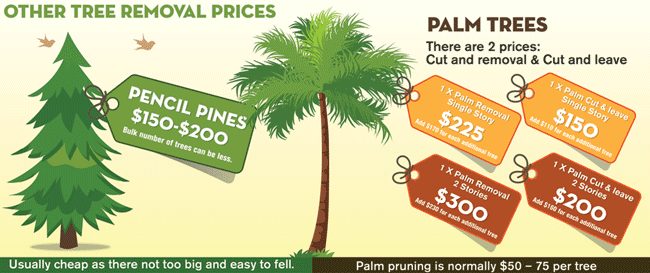Seasonal Tree Treatment: Exactly How To Handle Trees Prior To And After Removal
Seasonal Tree Treatment: Exactly How To Handle Trees Prior To And After Removal
Blog Article
Published By-
When it pertains to seasonal tree treatment, guaranteeing correct administration prior to and after removal can dramatically impact the health and wellness and visual appeals of your landscape. By understanding the needed steps associated with evaluating tree health and wellness and planning for elimination, you can proactively protect your residential property. But what concerning the vital techniques to follow once the tree is gone? Remain tuned to uncover the important post-removal treatment measures that will assist you cultivate a successful and sustainable setting for your trees.
Pre-Removal Tree Treatment
Before dealing with the removal of a tree, it's vital to focus on pre-removal tree treatment. Begin by assessing propety tree and structural stability. Look for indications of disease, bug infestations, or any kind of structural concerns that may present a security hazard during elimination. It's necessary to speak with a certified arborist to determine the best strategy.
Trimming dead or infected branches can stop additional damages to the tree and make certain a smoother elimination procedure.
In addition, take into consideration the environmental impact of getting rid of the tree. Trees play a vital role in our ecological community, so growing a brand-new tree in a suitable area can aid counter any kind of loss. Make sure that you have the required authorizations and approvals for tree elimination, specifically if the tree is secured by regional regulations.
Seasonal Upkeep Tips
Assessing your tree's requirements throughout the year is crucial for its wellness and long life. To maintain your trees in leading condition, comply with these seasonal upkeep tips.
In spring, concentrate on pruning to eliminate dead or damaged branches and encourage new growth.
Summer season requires normal watering, particularly during droughts, to ensure your tree remains hydrated.
As autumn techniques, keep an eye out for very early signs of condition or anxiety, and think about applying compost to safeguard the roots during wintertime.
In wintertime, be cautious when eliminating snow from branches to prevent damage, and continue to monitor your tree's total health and wellness.
Remember to adjust your treatment regular based upon the specific demands of your tree types and neighborhood environment. By remaining conscientious and aggressive throughout the seasons, you can assist your trees grow and thrive for years ahead.
Post-Removal Tree Treatment
To make certain the health of your landscape even after tree removal, correct post-removal treatment is important. After a tree is eliminated, it's vital to load the continuing to be hole with topsoil and portable it to prevent settling. This will aid keep the stability of the ground and prevent potential risks in the future.
Consider growing new greenery in place of the removed tree to restore the equilibrium and aesthetic appeals of your landscape. Frequently water the location to promote the development of new plants and protect against dirt erosion.
Examine the surrounding trees for any type of indications of disease or tension that might have been brought on by the removed tree. Keep an eye out for insects that could've been drawn in to the previous tree and take preventive measures to shield the remaining greenery.
If required, consult with affordable tree cutting service to evaluate the impact of the elimination on the surrounding trees and establish any type of extra care required. By complying with https://marionicxr.blogs100.com/31678668/the-total-manual-for-tree-debris-management-techniques-and-suggestions -removal care actions, you can make sure the ongoing health and charm of your landscape.
pre sale property
In conclusion, aggressive seasonal tree care is essential for keeping the wellness and balance of your landscape. By assessing tree health, trimming, and consulting with an arborist prior to removal, you can ensure a safe process. After removal, filling the hole, planting new vegetation, and normal watering will advertise new development and protect against disintegration. Remember to check bordering trees for disease and look for more care measures from an arborist to maintain your landscape prospering.
